On 2 July 1867, the first elevated railway in America was opened in New York City. Although it was short-lived, it represented important progress to providing public transportation in the growing city.
An article in the Railroad Gazette (1904), Early Transportation in New York, gives a background of the various passenger transport projects, whether actually operated or ideas never implemented, that preceeded this first elevated railroad in NYC. The article continues with more insight on the development of rapid transit in NYC until the end of the century.

On 2 Jul 1876, Harriet Brooks was born, the Canadian nuclear physicist who was probably the first to observe the recoil of the atomic nucleus as nuclear particles were emitted during radioactive decay. Ernest Rutherford called her the best woman scientist in the field next to Marie Curie. Yet, her success was hampered by the fact that she was a woman. Her premature death at age 56 was probably related to her work with radiation. Today's book pick is: Harriet Brooks: Pioneer Nuclear Scientist, by Marelene Rayner-Canham, who not only fills the gap in the contribution of women to science, but also provide an accurate representation of the early history of the theory of the transmutation of elements.
It is available from Amazon, typically about Used from $175.70. (As of earlier time of writing - subject to change.)
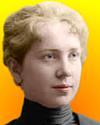 | I think it is a duty I owe to my profession and to my sex to show that a woman has a right to the practice of her profession and cannot be condemned to abandon it merely because she marries. I cannot conceive how women’s colleges, inviting and encouraging women to enter professions can be justly founded or maintained denying such a principle. (From a letter Brooks wrote to her dean, knowing that she would be told to resign if she married, she asked to keep her job. Nevertheless, she lost her teaching position at Barnard College in 1906. Dean Gill wrote that “The dignity of women’s place in the home demands that your marriage shall be a resignation.”) |
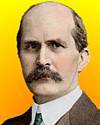 | Light brings us the news of the Universe. |
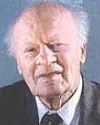 | We need science education to produce scientists, but we need it equally to create literacy in the public. Man has a fundamental urge to comprehend the world about him, and science gives today the only world picture which we can consider as valid. It gives an understanding of the inside of the atom and of the whole universe, or the peculiar properties of the chemical substances and of the manner in which genes duplicate in biology. An educated layman can, of course, not contribute to science, but can enjoy and participate in many scientific discoveries which as constantly made. Such participation was quite common in the 19th century, but has unhappily declined. Literacy in science will enrich a person’s life. |
| Before you look at today's web page, see if you can answer some of these questions about the events that happened on this day. Some of the names are very familiar. Others will likely stump you. Tickle your curiosity with these questions, then check your answers on today's web page. | |
| Births | |
 | Hans Albrecht Bethe, born 2 Jul 1906, is a German-born American theoretical physicist who helped to shape classical physics into quantum physics and increased the understanding of the atomic processes responsible for the properties of matter and of the forces governing the structures of atomic nuclei. He received the Nobel Prize for Physics (1967). For his explanation of which phenomenon earned him the Nobel Prize? |
 | Sir William Henry Bragg, born 2 Jul 1862, was a pioneer British scientist in solid-state physics who was a joint winner (with his son Sir Lawrence Bragg) of the Nobel Prize for Physics in 1915. During WW I, Bragg was put in charge of research on the detection and measurement of underwater sounds in connection with the location of submarines. He also constructed an X-ray spectrometer for measuring the wavelengths of X-rays. What application of X-rays earned their Nobel Prize? |
| Deaths | |
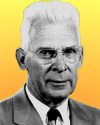 | Seth Barnes Nicholson (1891-1963) was an American astronomer best known for his discoveries of several satellites of Jupiter, beginning while he was a graduate student at the University of California. How many moons of Jupiter were known before he made his discoveries? |
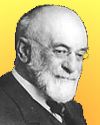 | Stephen Moulton Babcock (1843-1931) was an American agricultural research chemist, known chiefly because of his development of the Babcock test (1890). What does the Babcock test measure? |
| Events | |
 | On 2 Jul 1940, a new bridge was dedicated, watched by a crowd of 2,000 at Lake Washington, Seattle, Wash. It was about 34,000 ft (10,400 m) long and made of reinforced concrete. What was remarkable about the use of reinforced concrete? |
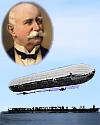 | In 1900, the first directed flight of a Zeppelin was made in Germany. LZ-1 was the first rigid airship to use a large internal metal frame containing multiple cells of hydrogen gas balloons. Its overall shape was a long uniform cylinder with rounded ends. To the nearest 20m (66 ft), how long was the LZ-1 Zeppelin? |
Fast answers for the previous newsletter for July 1: English Channel • differential and integral calculus • Richard Buckminster Fuller • Charles Goodyear • rumors of, then the action of, the American Civil War (1861-1865). • the decade including the year 1910.
 If you enjoy this newsletter, the website, or wish to offer encouragement or ideas, please send feedback by using your mail reader Reply button.
If you enjoy this newsletter, the website, or wish to offer encouragement or ideas, please send feedback by using your mail reader Reply button. Your click on a Facebook, StumbleUpon, or other social button on the site webpages is also a welcome sign of appreciation. Thank you for using them.
© This newsletter is copyright 2020 by todayinsci.com. Please respect the Webmaster's wishes and do not put copies online of the Newsletter — or any Today in Science History webpage. (If you already have done so, please remove them. Thank you.) Offline use in education is encouraged such as a printout on a bulletin board, or projected for classroom viewing. Online, descriptive links to our pages are welcomed, as these will provide a reader with the most recent revisions, additions and/or corrections of a webpage. For any other copyright questions, please contact the Webmaster by using your mail reader Reply button.
--
If you do not want to receive any more newsletters, Unsubscribe
To update your preferences and to unsubscribe visit this link
Executive Real Estate Business Class
-
"It was like a man with wings. It wasn't like anything you'd see on TV or in a monster movie." ...
About the publisher
Search This Blog
Blog Archive
-
▼
2021
(585)
-
▼
July
(50)
- Newsletter for Saturday 31 July.
- Newsletter for Friday 30 July.
- Power off and play this summer!
- Newsletter for Thursday 29 July.
- Newsletter for Wednesday 28 July.
- Newsletter for Tuesday 27 July.
- Newsletter for Monday 26 July.
- Newsletter for Sunday 25 July.
- Newsletter for Saturday 24 July.
- Newsletter for Friday 23 July.
- Newsletter for Thursday 22 July.
- Newsletter for Wednesday 21 July.
- Newsletter for Tuesday 20 July.
- Newsletter for Monday 19 July.
- The Machines That Built America Premieres Tonight
- Newsletter for Sunday 18 July.
- Newsletter for Saturday 17 July.
- Newsletter for Friday 16 July.
- Newsletter for Thursday 15 July.
- Newsletter for Wednesday 14 July.
- Newsletter for Tuesday 13 July.
- On This Day for July 12 - Geraldine Ferraro design...
- Newsletter for Monday 12 July.
- Inventing ‘The Machines That Built America’
- On This Day for July 11 - Duel between Aaron Burr ...
- Newsletter for Sunday 11 July.
- On This Day for July 10 - Telstar 1 launched, John...
- Newsletter for Saturday 10 July.
- On This Day for July 9 - Catherine the Great assum...
- Newsletter for Friday 9 July.
- New Season! Hope, Through History Podcast
- On This Day for July 8 - Vasco da Gama's first voy...
- Newsletter for Thursday 8 July.
- Ending soon: savings that pop! 🎆
- On This Day for July 7 - Hawaiian Islands annexed ...
- Newsletter for Wednesday 7 July.
- On This Day for July 6 - Anne Frank forced into hi...
- Newsletter for Tuesday 6 July.
- On This Day for July 5 - Israel's Law of Return pa...
- Newsletter for Monday 5 July.
- On This Day for July 4 - Declaration of Independen...
- Newsletter for Sunday 4 July.
- July 4th Sale at the HISTORY Store!
- On This Day for July 3 - Battle of Gettysburg ende...
- Newsletter for Saturday 3 July.
- On This Day for July 2 - Civil Rights Act signed, ...
- Newsletter for Friday 2 July.
- July 4th savings that pop!
- On This Day for July 1 - Dominion of Canada establ...
- Newsletter for Thursday 1 July.
-
▼
July
(50)
-
Blogroll
-
About
HistoryFact










0 comments:
Post a Comment